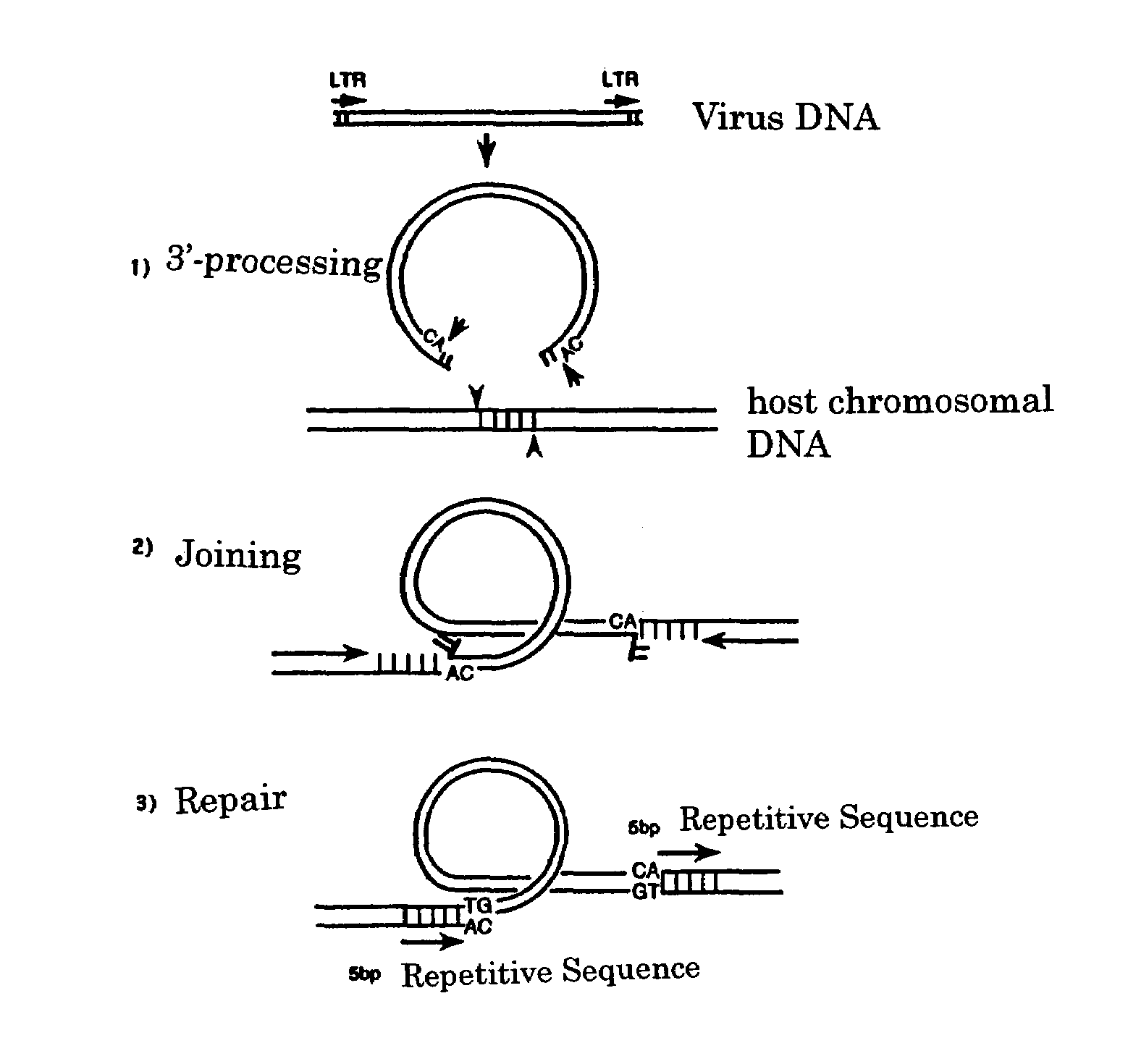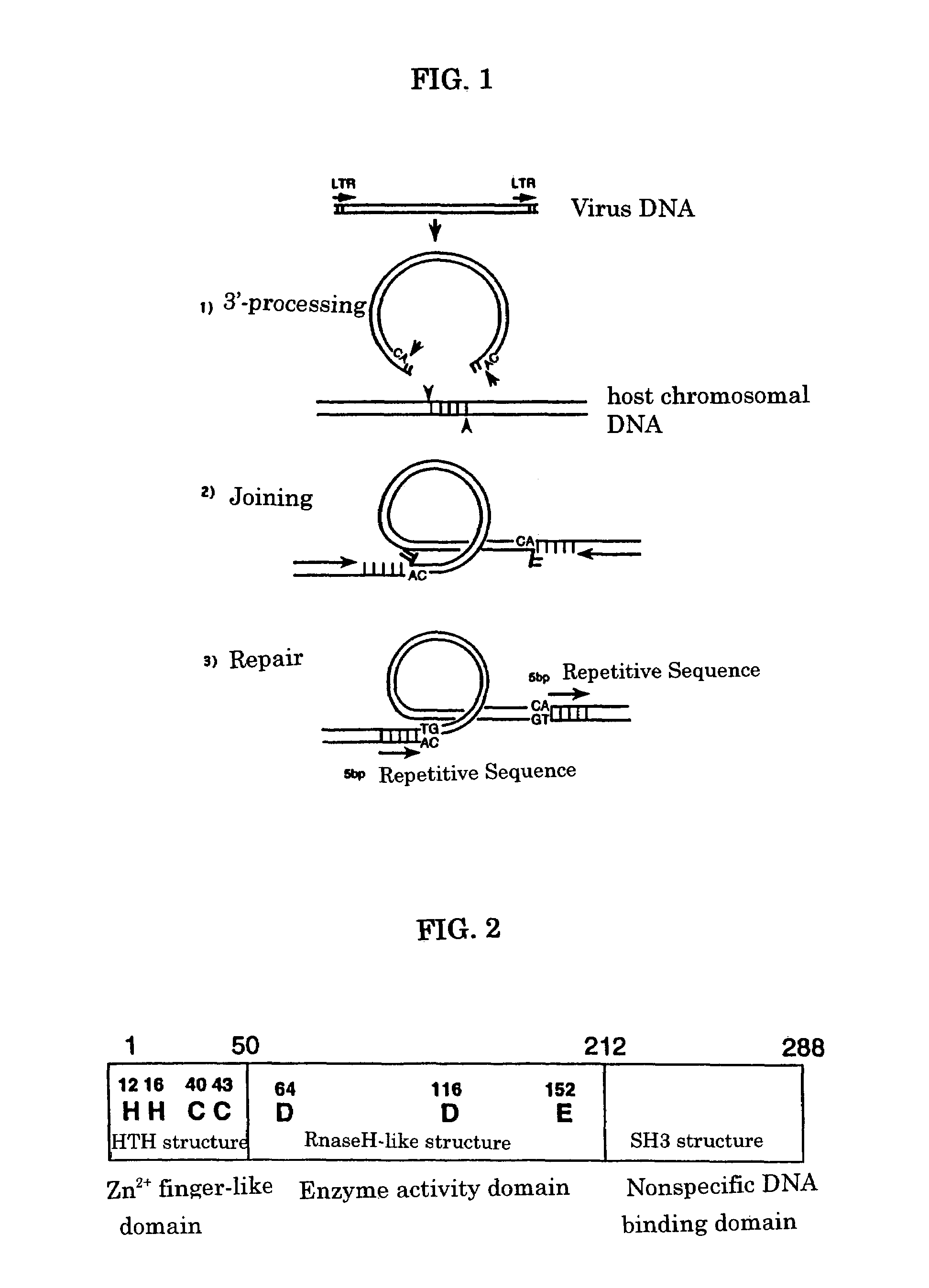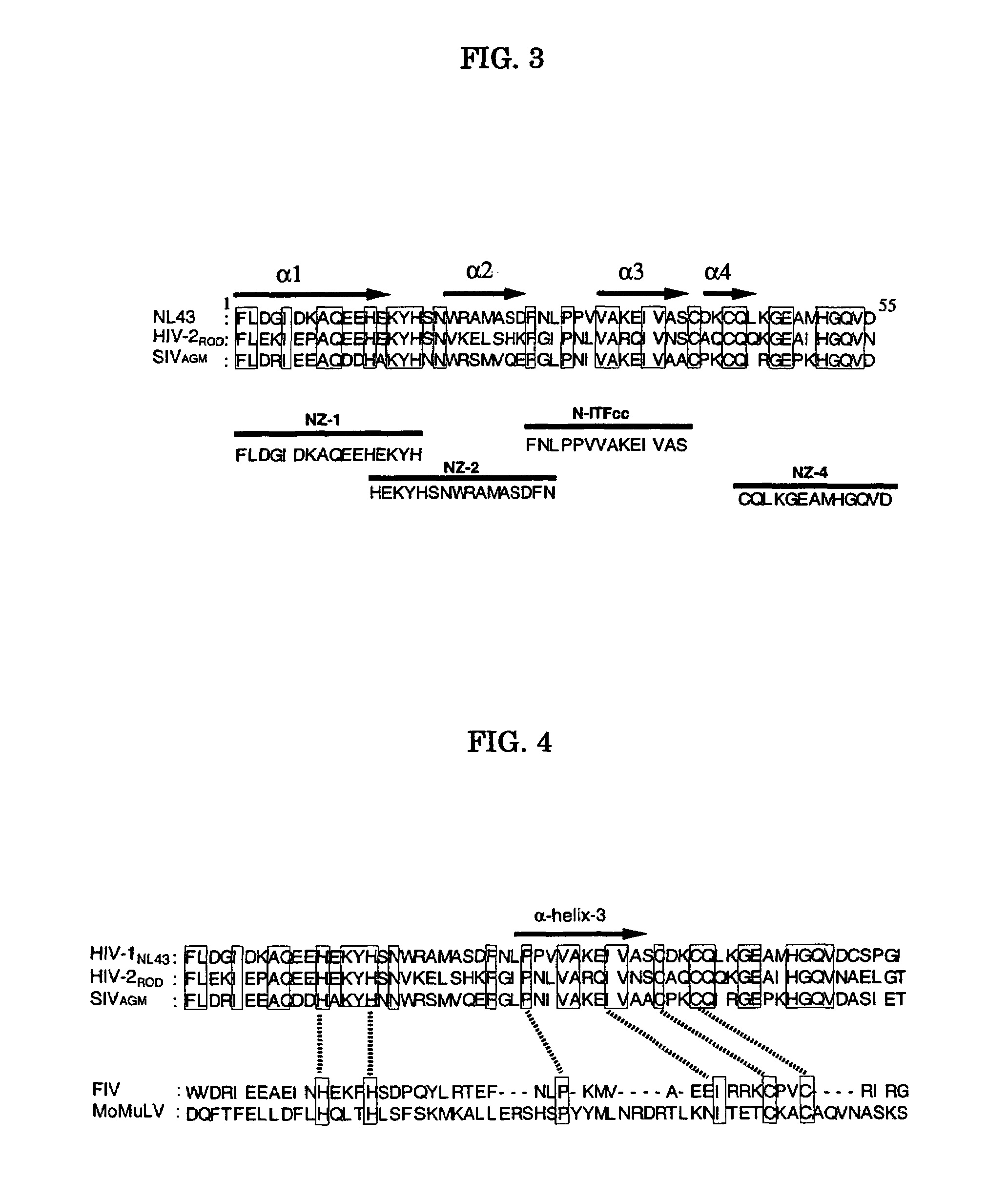Viral infection inhibitor targeting integrase N-terminal domain
a technology of integrase and virus, applied in the field of infection inhibitors against retroviruses, can solve problems such as the influence of viral infectivity and death
- Summary
- Abstract
- Description
- Claims
- Application Information
AI Technical Summary
Benefits of technology
Problems solved by technology
Method used
Image
Examples
example 1
Generation of Mutant Clones of HIV-1 Integrase
[0066]Mutagenetic DNA fragment of HIV-1 integrase was obtained from pNL4-3, which is an infectious clone, by the method previously described (J. Virol. 59, 284-291, 1986). As mutagenetic DNA fragment of HIV-1 integrase, 4.3 kb fragment covering from SPeI site to SalI site of the pNL4-3 was subcloned into pBluescript SK (Stratagene). This vector DNA was prepared to be single-stranded DNA, and the single-stranded DNA was subjected to site-directed mutagenesis with helper phage M13K07 according to the instructions in the protocol of T7-GEN in vitro mutagenesis kit (Biochemical, U.S.A.), and mutant clones of HIV-1 integrase such as said (C43H), (C40H), (C40H, C43H), (H12C, H16C), (H12C, H16C, C40H, C43H), (P29F), (V32E), (I36E), (Y15A), (15T) and the like were obtained (see FIG. 4).
example 2
Generation of a Pseudotype Virus from Each HHCC Motif Mutant Clone and Amphotropic Envelope of Murine Leukemia Virus
[0067]1 μg mutant clones of HIV-1 integrase (pNLlucΔBgIII) obtained by the method described in Example 1, and 1 μg amphotropic envelope expression vector of murine leukemia virus (pDJ-1) were mixed in 10 μl Lipofect amine (BRL), then brought into reaction for 30 minutes at 30° C. The reactant was added to COS cells and transfected. Six hours after the transfection, 4 ml DMEM (Dulbecco's modified Eagle's medium) supplemented with 10% of bovine serum was added and then cultivation was conducted. 24 hours later, the culture liquid was replaced by 4 ml new culture liquid of the same type, and the cultivation was continued to generate pseudotype viruses released from COS cells to culture liquid, and the amount of viral particle release in the viruses was determined by p24 solid phase enzyme immunoassay (FIG. 5). The obtained culture liquid was used as viral solution, and fo...
example 3
Infectivity of Each Mutant Virus
[0069]About 50 ng of each viral solution determined by p24 solid phase enzyme immunoassay described in Example 2 was added with deoxyribonuclease I and treated for 30 minutes in the presence of 10 mM magnesium chloride. The viral infection was conducted by inoculating the obtained DNA of each mutant virus to RD cells (human rhabdomyosarcoma cells). Two days and six days after the infection, virus genes emerging in the infected cells were measured by said luciferase assay (FIG. 7). As a result, all mutant viruses excluding one example (the mutant virus of P30N) showed smaller values than Mock, indicating that the viral infectivity is severely inhibited by the viral mutation.
PUM
| Property | Measurement | Unit |
|---|---|---|
| enzyme activity | aaaaa | aaaaa |
| NMR | aaaaa | aaaaa |
| hydrophobic | aaaaa | aaaaa |
Abstract
Description
Claims
Application Information
 Login to View More
Login to View More - R&D
- Intellectual Property
- Life Sciences
- Materials
- Tech Scout
- Unparalleled Data Quality
- Higher Quality Content
- 60% Fewer Hallucinations
Browse by: Latest US Patents, China's latest patents, Technical Efficacy Thesaurus, Application Domain, Technology Topic, Popular Technical Reports.
© 2025 PatSnap. All rights reserved.Legal|Privacy policy|Modern Slavery Act Transparency Statement|Sitemap|About US| Contact US: help@patsnap.com



